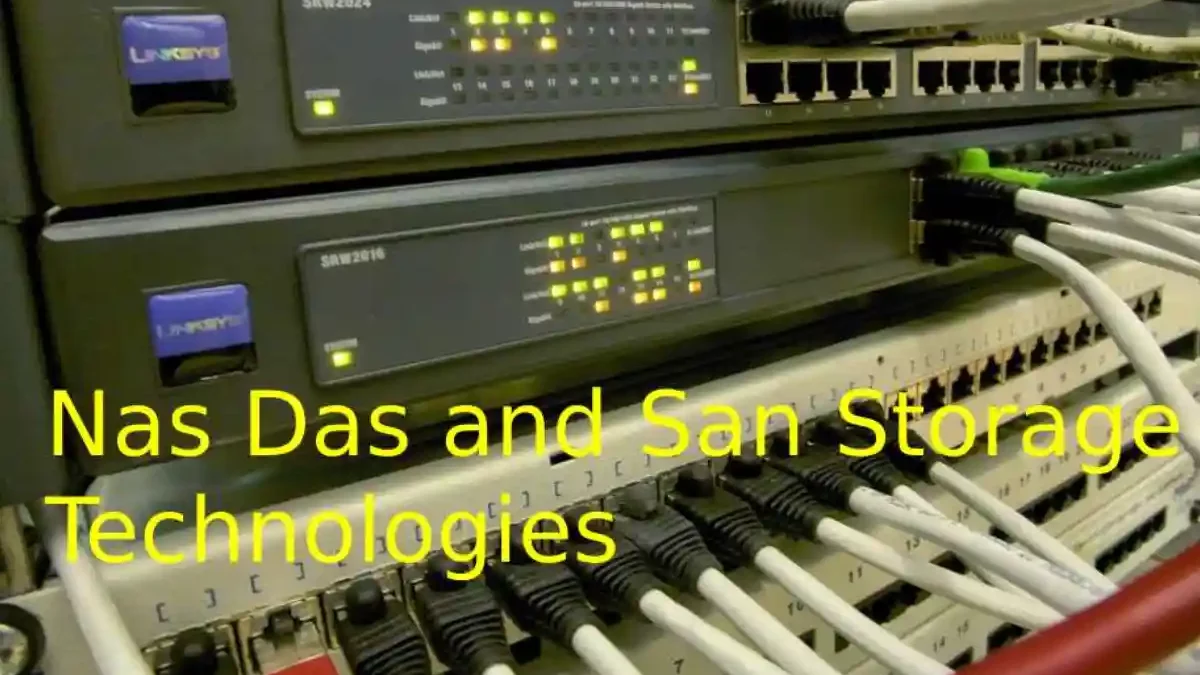Table of Contents
Nas Das and San
Most likely, by now, you have already imagined that both the NAS, DAS and SAN. They are types of storage technology used in servers. But how are they different, and what is each one for? In this article, we hope to reply to these questions.
NAS (Network Attached Storage)
The simplest way to describe a NAS is to define it as a hard drive directly connected to a LAN network.
So these hard drives connected to our LAN network allow us to work with the stored information. So we are giving all users connected to this LAN network the power to share files and work on them.
So NAS systems are oriented to handle a large set of small documents, and we can deduce that they are perfect office or home companions. It has the advantage that it is small in size and does not require maintenance like servers. Besides that, it has lower power consumption, is compatible with most operating systems and is easier to manage.
- A private cloud system.
- Share files
- Web servers (albeit low powered)
DAS (Direct Attached Storage)
The main difference between a DAS and a NAS is that the former do not have Web functionalities. It could say that the DAS system is the simplest of the three, and practically all of us have used it without knowing it. It consists of a direct computer connection to the data instead of connecting it with a router or NAS. We can say that they are external hard drives that share data between users.
Advantages:
- The more incredible speed of access and transmission of information.
- Simpler and less expensive than a NAS
- Disadvantages do not work as a web server
SAN (Storage Area Network)
A SAN is a set of devices and specialized software to create a network focused on exchanging data through blocks. It is a perfect technology to connect servers.
These systems contain a high-speed network, interconnection equipment such as switches and switches, hard drives to store data
. The advantages are notable:
- higher efficiency
- More excellent protection for your systems and data
- Great scalability
- encryption
- Backup
- Its capacity is almost unlimited and can reach thousands of terabytes of capacity.
- Share data between multiple computers on the network without impacting performance since SAN traffic has separate by user traffic.
In contrast to this system, we have to mention that it is a very professional and expensive way of managing data due to many hardware and specialized personnel.
Which Storage Technology Should we Choose
Depending on your needs, you should opt for one system or another.
On the one hand, a DAS severely limits further growth
. NAS are simple and easy to manage. They are versatile and straightforward to set up, although they may have flaws in terms of performance depending on their use. Lastly, SANs are the most complete and powerful, but they are much more complex and expensive, so we only recommend them in highly demanding environments.
What Advantages and Disadvantages of Nas Das and San
Neither is better than the other; it all depends on what you want to use it.
In NAS technology, applications make data requests to file systems remotely using CIFS and NFS protocols, and storage is local to the file system. Instead, DAS and SAN make data requests directly to the file system.
With SAN and DAS systems, clients access files at a low level, that is, they do it as if they were accessing their file system, indicating, for example, “block 2000 disk 6”, unlike a NAS system in which that access is of the form \\server\directory1\file1
Nas Das and San
The advantages of NAS over direct-attached ( DAS ) are the ability to share drives, lower cost, use of the same network infrastructure, and easier management. On the contrary, NAS has lower performance and reliability due to the shared use of communications.
NAS device connections are made via Ethernet, while SAN connections are via fiber optics, and DAS connections are via SCSI and are typically dedicated.
A similarity that occurs in all cases is that the storage capacities are much higher than those of any server or desktop computers; at this time, they are in the order of Terabytes (TB) since they have a relatively large number. big disks
All systems use RAID disks, which increases the speed of access to files considerably; they also provide fault tolerance and integrity.
Final Notes
Throughout the evolution of data center storage, customers and IT managers have become very familiar with cloud technology. For example, if you ask them what the value of cloud storage is, they will likely tell you that the cloud provides you with the space you need for your storage and compute capacity in an elastic, scalable, and on-demand way. You won’t hear them refer to backend disk providers because they’re irrelevant in the cloud world. New language introducing, and the audience is ready to move on and welcome the cloud state of mind. Whether in the public or private cloud, users are looking for intelligent software that manages their pool of resources with ease.
The evolution of data center storage began with single server attached storage and grew to where everything consolidated into specific silos. Now we are witnessing a return to the previous methods, although everything is more natural and efficient this time due to all the advances.

